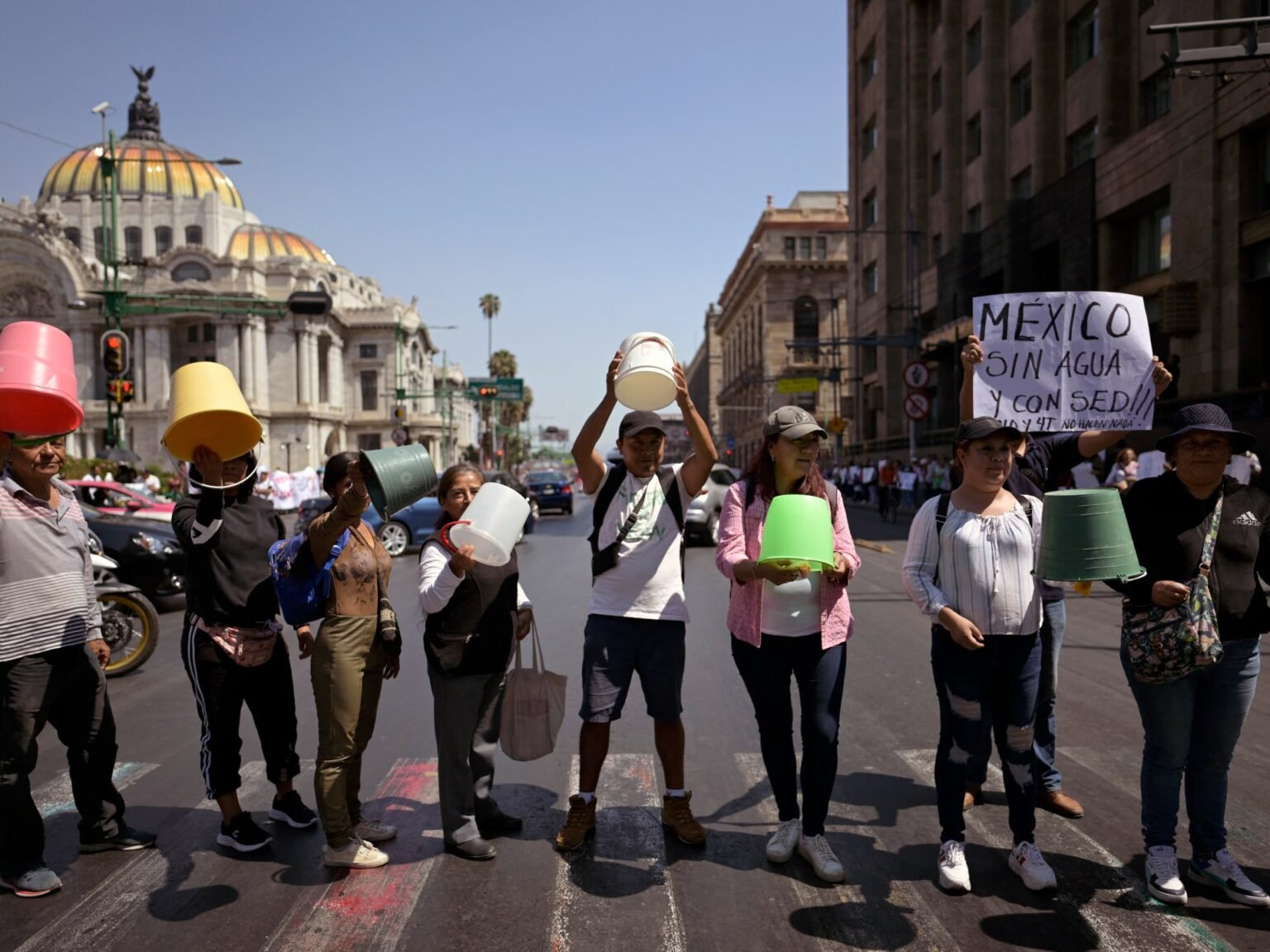Walking through Mexico City’s historic Zocalo district, Dario Solano-Rojas points out signs of a subterranean catastrophe unfolding. The roads are uneven, buildings are sinking, and iconic monuments like the Metropolitan Cathedral are disappearing into the earth. The city, home to nearly 9 million people, is sinking by as much as 40cm annually due to a deepening water crisis rooted in historical decisions dating back 500 years. The reliance on underground water is causing the city to sink deeper and deeper, with no clear solution in sight.
The struggles faced by Mexico City highlight how both the wealthy and the disenfranchised are ill-prepared for water shortages. The water crisis not only affects the impoverished neighbourhoods with inconsistent water supply, like Iztapalapa, but also adjacent affluent areas like Coyoacan. The historical decision to drain the lakes and build over them has created major issues as the city loses significant amounts of water due to leaks in broken pipes. The subsidence of the city is impacting buildings, roads, and even the metro system.
Experts suggest that the solution to Mexico City’s water crisis lies in stopping the extraction of underground water, but this is unlikely to happen. The upcoming mayoral elections in the city have put a spotlight on water infrastructure as a critical issue, but quick fixes are not realistic given the scale of the problem. Day Zero, the predicted date when wells will run dry, has already arrived for many in the city, particularly in the poorest areas where water shortages are a daily struggle. The aquifer beneath the city, which provides 70 percent of the water supply, is at risk of depletion within the next few decades.
Long-term solutions are needed to address Mexico City’s water crisis, but quick fixes like water rationing and water trucks are only temporary measures. Privatisation and climate change are cited as contributing factors to the water shortage, with industrial operations granted significant water concessions. Solutions like decentralising water-intensive industries and increasing green spaces to recharge the aquifer are essential but require significant political will. Collective action and a shift in mindset towards water conservation are necessary to overcome the water emergency facing Mexico City.
As Mexico City grapples with its sinking infrastructure and dwindling water supply, the need for holistic and sustainable solutions becomes increasingly urgent. The city must find ways to utilise water more efficiently, recharge the aquifer, and adapt to the challenges posed by climate change. Only through collective action and a fundamental shift in how water is managed in the city can Mexico City hope to overcome its water crisis and ensure a sustainable future for its residents.










